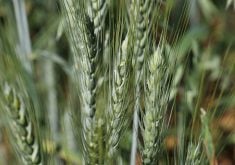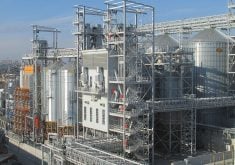One crop that Agriculture Canada didn’t talk about in its 2015 acreage outlook deserves a mention, according to the owners of two seed labs.
“A very hot topic here is fababeans,” said Trevor Nysetvold, president of BioVision Seed Labs in Sherwood Park, Alta.
Farmers are impressed with the crop’s standability and see it as a good substitute for peas, which causes harvest problems because of its tendency to lay flat on the ground.
Nysetvold said fababeans provide an option for farmers who want to keep a pulse crop in their rotations. He estimates growers in Alberta planted 15,000 acres of the crop last year and thinks a lot more will be planted this year.
Read Also

Short rapeseed crop may put China in a bind
Industry thinks China’s rapeseed crop is way smaller than the official government estimate. The country’s canola imports will also be down, so there will be a lot of unmet demand.
“It’s going to grow for sure,” he said.
Limited seed supply is the only problem.
“We are hearing that there is some shortages of seed,” he said.
Bruce Carriere, owner of Discovery Seed Labs, is shocked by the increase in fababean samples coming through his Saskatoon lab.
“We would probably be up 700 percent,” he said.
Carriere believes Saskatchewan growers will plant 10,000 to 15,000 acres of the crop.
“I think they’re looking at it as an alternative to some of the other crops,” he said.
“Fababeans don’t mind wet feet.”
Carriere agreed that the acreage will come at the expense of peas in places like northwestern and southwestern Saskatchewan, where pea growers have been fighting aphanomyces, a new type of root rot disease.
Bert Vandenberg, a fababean breeder with the University of Saskatchewan’s Crop Development Centre, once said it has the potential to be a million acre crop.















